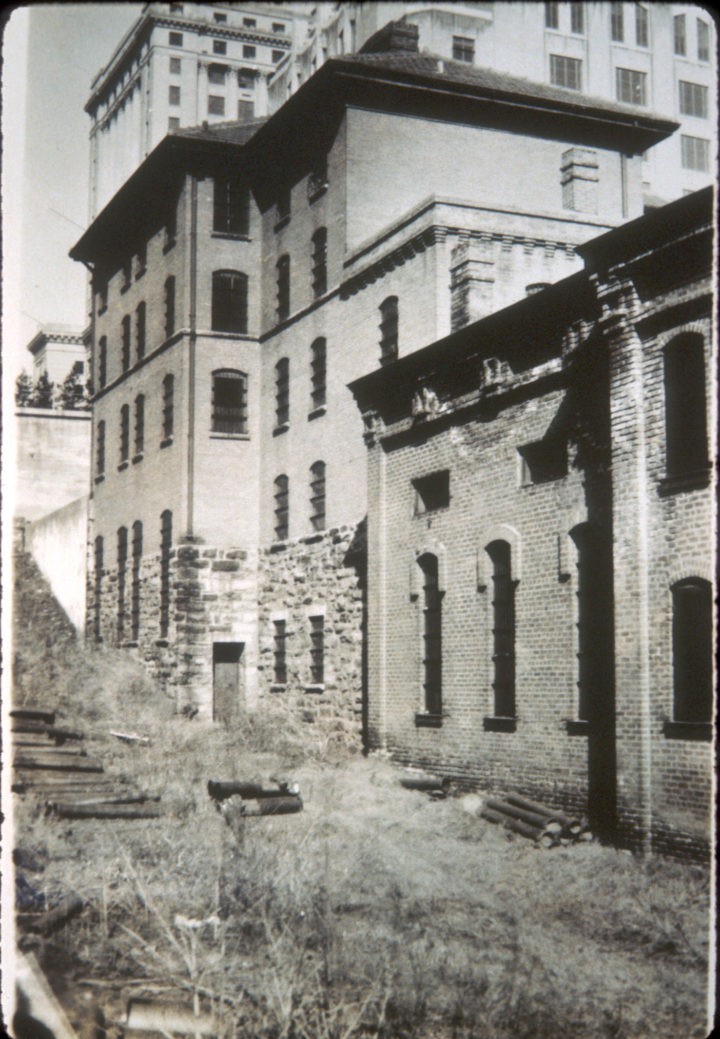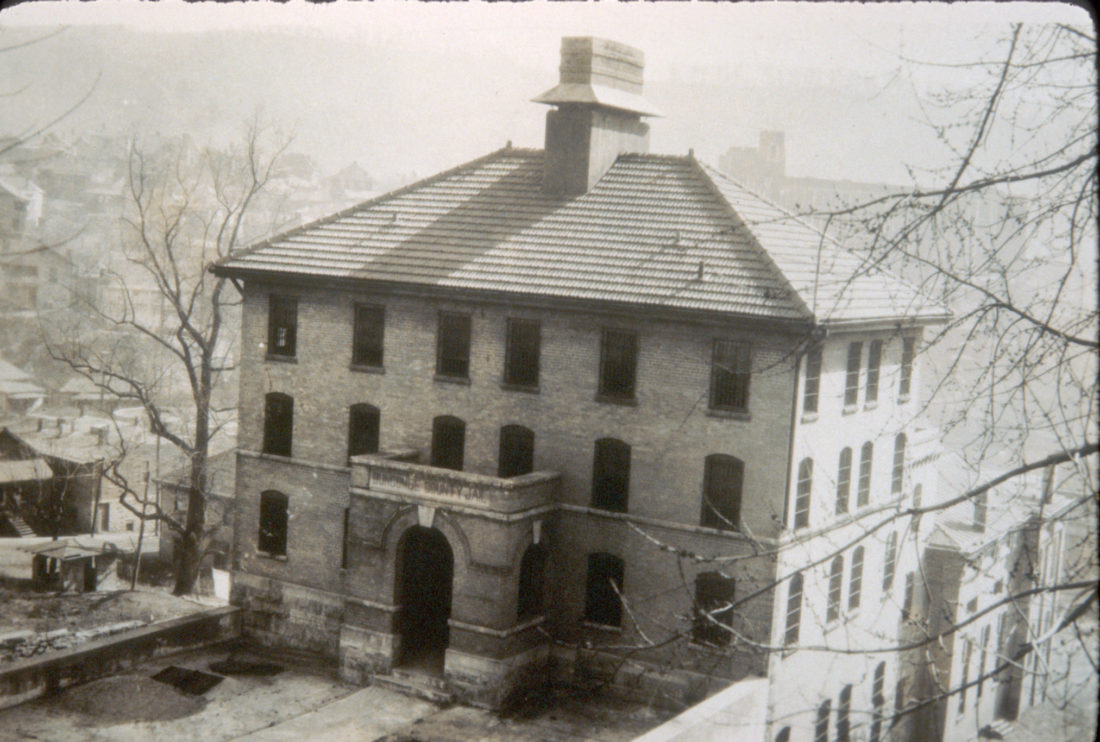“The present jail has long been notoriously inadequate to the demands on it and it is a matter of only a short time before a new jail will be an imperative necessity,” declared The Asheville Citizen on Aug. 31, 1906. Located on Eagle Street, the structure was designed to house a maximum of 36 inmates, the paper reported. Yet, the article continued, “It has been made to hold 108 at one time.”
In November of that year, a grand jury was summoned to investigate the site. The panel’s recommendation to the judge was unanimous: A new jail was urgent. Overcrowding and lack of “disinfecting facilities” made it “impossible to keep out vermin,” the report read.
The county wanted the new jail built adjacent to the 1903 courthouse. But commissioners forgot one crucial detail: The late George Willis Pack, who deeded the land to the county in 1901, strictly forbade the construction of a jailhouse on the 4-acre plot. In February 1907, the previously overlooked clause was rediscovered, and the project was “temporarily abandoned,” the paper wrote.
By April, The Asheville Citizen reported that a new site was selected on Marjorie Street, “in the rear of the present jail.” Construction began that August. According to newspaper accounts, the structure cost between $30,000 and $40,000 (or roughly $819,400 to $1,093,000 in today’s dollar).

Over the next year, sporadic updates on the project appeared in the paper.
Finally, on June 6, 1908, The Asheville Citizen reported that the new jailhouse was nearly complete. The five-story brick structure, the paper wrote, “is fitted out with all the most modern and convenient improvements.” Features included electric lighting, steam heating and ventilators in the ceilings of all cells. In addition, the new jail featured “strong wire screening … placed over all the windows so that no outsider will be able to toss notes, weapons or implements of any kind through to the occupants.”
Original plans called for the demolition of the old jail. But by 1908, the structure still stood. The June 6 article stated the county planned to use the site “for insane prisoners, women and small boys.”
On Aug. 17, 1908, after a two-month delay, “Jailer Mitchell … transferred his flock of ‘birds’ from the old county jail into the new,” reported The Asheville Citizen in the following day’s paper. “All morning the prisoners swept floors, washed windows and cleaned their new domicile as scrupulously as if it were to be their permanent abode,” the article continued.
Unlike the old site, the new jail’s walls “were dull and uninteresting,” the paper reported. “They lacked all the old autographs that have come down from past generations of prisoners[.]”
According to the North Carolina Room at Pack Memorial Library, the jail closed in 1928. For a period thereafter, the site functioned as a storage space for the county. The building was stripped of its metal for military purposes during World War II. In 1951, the structure was razed.
The North Carolina Room records also note the jail had an unused hanging trap. Ironically, the method of execution was outlawed in 1909 (replaced by the electric chair, with all state executions taking place in Raleigh).
The hanging trap is alluded to in the Aug. 18, 1908, article. The paper writes:
“As the prisoners became accustomed to their surroundings they explored the building probably with a view to selecting the quarters they liked best. They wandered from room to room and from cell to cell and looked out from the windows just as a prospective purchaser would to examine the view. Few of them made any minute examinations of the black trap door with the large leaver … in the side hall on the first floor. The door leads to somewhere, but none of them had any curiosity to find out where.”
Editor’s note: Peculiarities of spelling and punctuation are preserved from the original documents.




Thomas – You may want to look into the strange and relevant case of “Moffitt v. City of Asheville.”
https://cite.case.law/nc/103/237/
I’ve always wondered if this was a source of resentment to later generations of Moffitts. Hmmm…
Thanks for sharing. I’ve only had the chance to skim it so far, but I look forward to giving it a closer read later.